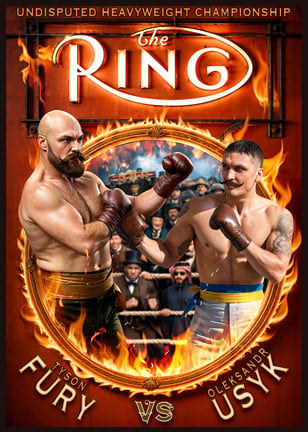Rocky
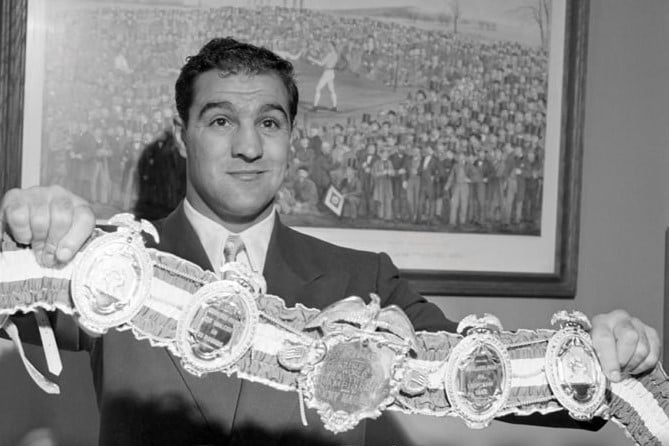
Editor’s note: This feature originally appeared in the latest issue of Ring Magazine.
Man walks on the moon. Woodstock festival draws 350,000 music fans. Charles Manson arraigned in Sharon Tate murders. More than 250,000 march on Washington in protest of the Vietnam War. Just some of the unforgettable events in American history that took place in the year 1969. It was this headline, however, that shook the world of boxing to its very foundations: “Marciano Dies in Plane Crash.”
On August 31, 1969, the day before his 46th birthday, former heavyweight champion of the world Rocky Marciano boarded a small Cessna 172 aircraft in Chicago to meet a business engagement in Des Moines, Iowa. The pilot, Glenn Belz, who had very little experience and lacked the necessary qualifications to fly by instruments, encountered difficult conditions and lost control of the plane. Marciano, Belz and another man, Frankie Farrell, died on impact near Newton airfield.
Half a century has passed since his tragic and untimely death, but Marciano’s amazing legacy continues to endure, and his 49-0 (43 knockouts) mark has taken on an almost mystical quality.
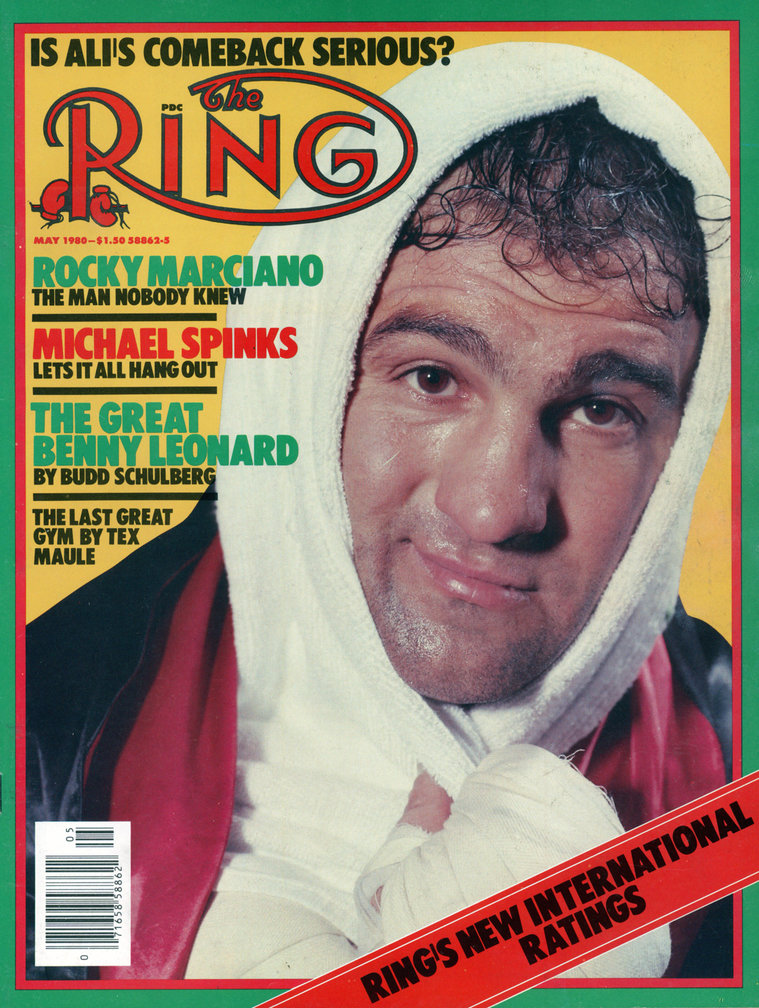 His championship reign lasted three years, which is much shorter than many of his contemporaries. However, Marciano’s title bouts contained enough drama and excitement to satisfy even the most demanding of fight fans. He got off the floor to win, he came from behind to win and he scored knockouts when on the verge of being stopped himself. Out of seven Marciano title bouts, three were named The Ring Magazine Fight of the Year. It’s not all about longevity when you’re at the top; it’s about what you do when you’re there. That’s why Marciano’s career is timeless.
His championship reign lasted three years, which is much shorter than many of his contemporaries. However, Marciano’s title bouts contained enough drama and excitement to satisfy even the most demanding of fight fans. He got off the floor to win, he came from behind to win and he scored knockouts when on the verge of being stopped himself. Out of seven Marciano title bouts, three were named The Ring Magazine Fight of the Year. It’s not all about longevity when you’re at the top; it’s about what you do when you’re there. That’s why Marciano’s career is timeless.
Would he have been a great fighter in 2019? It’s worth remembering that at 5-foot-10½ and barely 190 pounds, Marciano was a small man compared to today’s modern cruiserweights, never mind the behemoths who rule the glamour division at approximately 6-foot-6 and 250 pounds. The main objective for a champion is to be the best in their time, and Marciano accomplished that feat during a golden era when there was only one championship to win.
Growing up as a kid in his beloved home city of Brockton, Massachusetts, he’d harbored hopes of becoming a major league baseball player, but it was Marciano’s destiny to score home runs in the prize ring. By the time he was set to challenge the great Jersey Joe Walcott for the heavyweight championship, Rocky was unbeaten in 42 fights with 37 knockouts. As his record suggests, he was an authentic knockout puncher, but there was so much more to his game. He bobbed and weaved, cut off the ring adeptly, set up power punches with subtle feints, used angles and targeted the body with murder in his heart. Marciano’s boxing brain was vastly underrated, as was his ability to adjust under fire – a vital championship quality. Take all of this and mix in the stamina of a workhorse and the courage of a soldier, and you had Rocky Marciano.
The Ring now looks back at all seven of the great former champion’s heavyweight title fights:
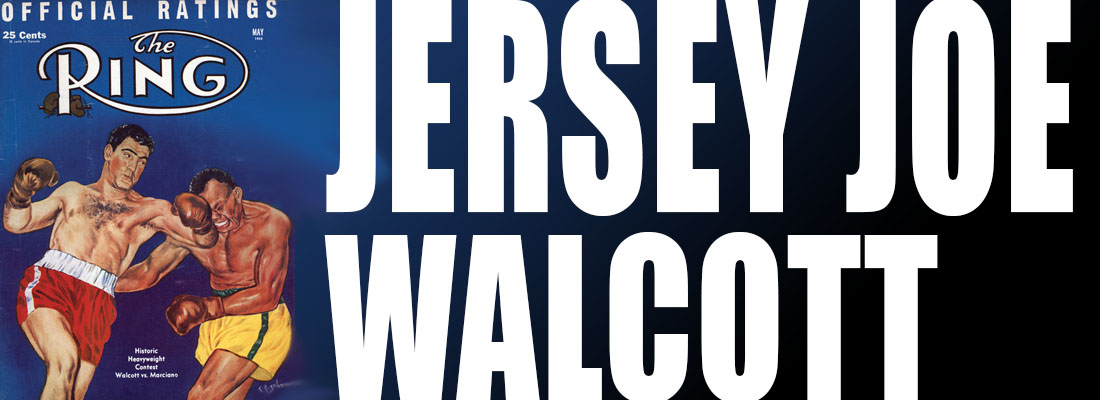 September 23, 1952/Municipal Stadium, Philadelphia • The Ring Magazine Fight of the Year
September 23, 1952/Municipal Stadium, Philadelphia • The Ring Magazine Fight of the Year
At 38 years old, Arnold Raymond Cream, aka Jersey Joe Walcott, was the oldest heavyweight champion in boxing history, a record he would hold until a 45-year-old George Foreman knocked out Michael Moorer in 1994. However, as was the case with so many great fighters, age was just a number. Despite entering the ring as underdog – the first heavyweight champion to do so since Jim Braddock faced Joe Louis in 1937 – Walcott wasn’t going to go away easily. He decked the unbeaten challenger with a crisp left hook in Round 1 and boxed brilliantly in one of the greatest heavyweight fights ever. Round after round, Walcott’s jab, foot speed and famed herky-jerky defense gave Marciano fits. In the 11th, the old champion hurt his man with another stiff left hook and the quick follow-up barrage left Marciano visibly exhausted as he returned to his corner. The 12th was another big frame for Jersey Joe. Scoring was on a rounds basis and Walcott was ahead 8-4, 7-5 and 7-4-1 going into the 13th round. Marciano needed a knockout to win, and he got it with one of the most explosive right-hand shots ever landed in a heavyweight championship fight. A short left hook – released while the stricken veteran was on his knees – compounded the damage and Walcott was counted out. He never knew what hit him. “I thought I was just a hair behind (in the scoring) and I knew I had to do something,” said Marciano following his historic triumph.
Result: KO 13
***
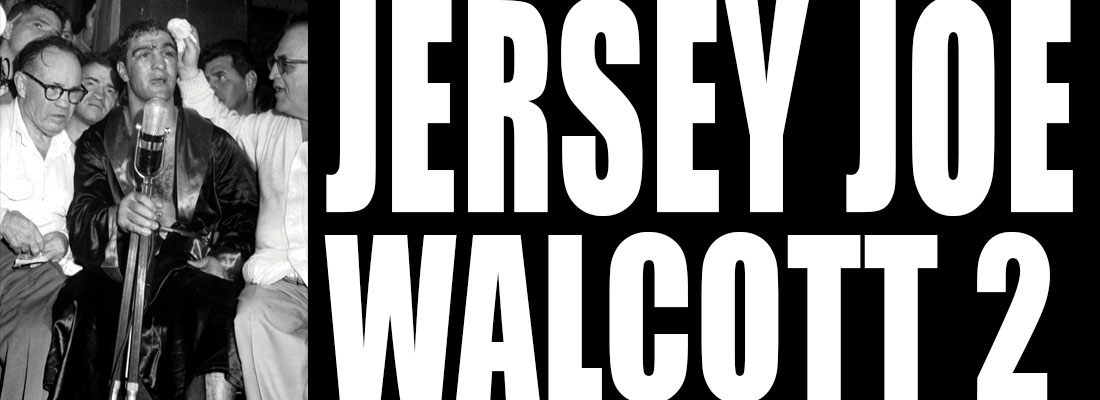 May 15, 1953/Chicago Stadium, Chicago
May 15, 1953/Chicago Stadium, Chicago
The battle-worn Walcott was nine months older and Marciano – now entering his prime years – was nine months better. The new champion started the rematch where he left off, attacking his opponent with massive power shots and depriving him of the time and distance he required. Some of these assaults were wild and sailed harmlessly through the night air, but the challenger appeared flustered by Marciano’s aggression and was unable to pull the trigger on counter shots like he had in Philadelphia. With less than a minute remaining in Round 1, a left hook landed high on the head, and as Walcott ducked down to avoid the anticipated overhand right, he was met with a jolting right uppercut to the point of the chin. He didn’t see it. He didn’t expect it. He could not recover from it. Referee Frank Sikora completed the count a fraction before Walcott quickly pulled himself erect. It was all over at 2:25 of Round 1. An official appeal was launched by Walcott’s manager, Felix Bocchicchio, who complained that his fighter had been the victim of a quick count, but the result stood. This was the final fight of Walcott’s 23-year professional career. He retired with a modest record of 50-20-1 (31 KOs), but the official numbers belie the class and quality of a truly great fighter.
Result: KO 1
***
 September 24, 1953/Polo Grounds, New York • The Ring Magazine Fight of the Year
September 24, 1953/Polo Grounds, New York • The Ring Magazine Fight of the Year
Approximately 45,000 fans showed up for this eagerly anticipated rematch. The pair had met three-and-a-half years earlier at Madison Square Garden, with Marciano claiming a 10-round split decision, but despite the fact that many felt the verdict should have been unanimous, the LaStarza camp was extremely confident ahead of the return. “Roland is at his physical peak,” manager Jimmy De Angelo told The Ring. “He is two inches taller and many inches broader than he was in 1950. LaStarza’s left hand will beat Marciano when next they meet, as it actually beat Rocky in 1950.” But while the 26-year-old challenger from the Bronx exhibited some nice lateral movement and sharpshooting early, his success was short-lived. The champion opened a cut over his opponent’s right eye in the third and was in complete command by the midway point. He rolled under LaStarza’s assaults and hammered the body at every opportunity. He also let loose with headbutts, elbows and shots after the bell, and referee Ruby Goldstein penalized Marciano in the sixth round for low blows. The punishment and the pain continued to intensify until LaStarza ran out of resistance in the 11th. Marciano missed a left hook but got full leverage on the follow-up right, and a brutal assault put LaStarza through the ropes. The challenger rose gamely, but Marciano unloaded his entire repertoire, forcing Goldstein to intervene.
Result: TKO 11
***
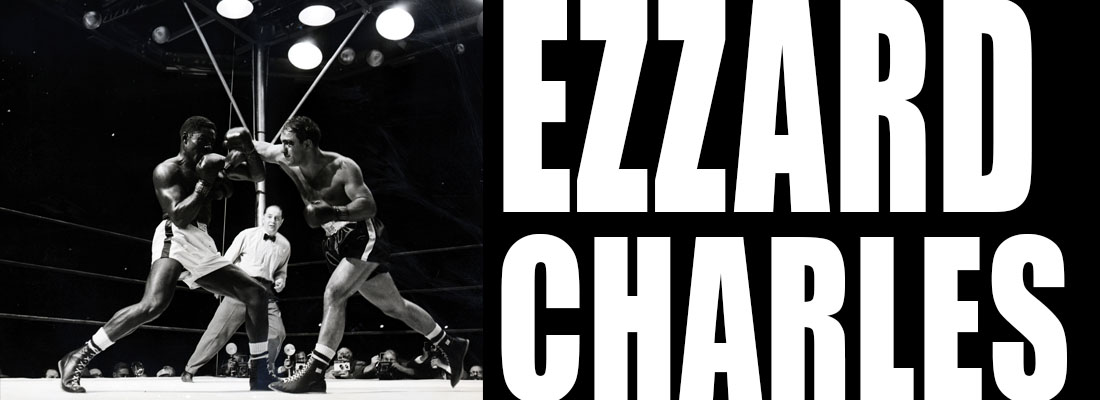 June 17, 1954/Yankee Stadium, New York
June 17, 1954/Yankee Stadium, New York
It is hard to overstate the quality of Ezzard Charles. Unanimously considered one of the greatest fighters who has ever lived, “The Cincinnati Cobra” was a surefire Hall of Famer before his heavyweight incursion even began; two victories over perennially avoided middleweight Charlie Burley and three over light heavyweight legend Archie Moore guaranteed that. In June 1949, Charles outpointed Walcott to win the heavyweight championship and repeated that result two years later before losing twice to Jersey Joe. With Marciano now at the helm, Charles attempted to become the first man to regain the greatest prize in sports, and that motivation brought out the best in him. An 18-5 underdog, Charles fought brilliantly, using all the experience he’d gained in amassing an incredible 85-10-1 (49 KOs) record. Unlike many of Marciano’s previous opponents, Charles knew how to neutralize the champion’s work on the inside, and he gave him hell early on. The challenger worked the body, scored with highlight-reel power shots and kept his man off-balance by staying mobile. However, Marciano was impossible to discourage, and over the course of his first and only completed 15-round bout, he wore his man down. This was as close as any fighter would come to dethroning Marciano, who won a unanimous decision by scores of 9-5-1, 8-6-1 and 8-5-2.
Result: UD 15
***
 September 17, 1954/Yankee Stadium, New York • The Ring Magazine Fight of the Year
September 17, 1954/Yankee Stadium, New York • The Ring Magazine Fight of the Year
As his return bouts with Walcott and LaStarza proved, Marciano always performed better in rematches. This sequel was no different. The champion was obsessed with proving his superiority over Charles by inflicting a painful and destructive victory, and he didn’t disappoint. Perhaps with the aim of matching Marciano for strength, the challenger weighed in at a career-heaviest 192.5 pounds – seven pounds heavier than for the first meeting – but the extra bulk worked against him. After clearly winning the first round, Charles cracked Marciano with a huge right in the second, but that success only served to infuriate the champion, who attacked ferociously and dropped his rival with a two-fisted barrage. Unlike the first meeting, when Charles was given time to work on the outside and slow Marciano down with clinches, he was now being overwhelmed by volume, strength and aggression. The only rest he could take advantage of was between rounds, and it wasn’t enough. Marciano walked through Charles’ assaults with abandon and dished out fierce punishment to head and body. A clean right decked the challenger in the eighth, and he rose on unsteady legs. The inevitable finish came courtesy of a torrid combination, culminating in a left hook that dropped Charles to his knees. Worn out and battered, the great ex-champion was unable to beat the count. Despite his dominance, Marciano had actually needed the stoppage due to a grotesque cut that had opened up on his left nostril.
Result: KO 8
***
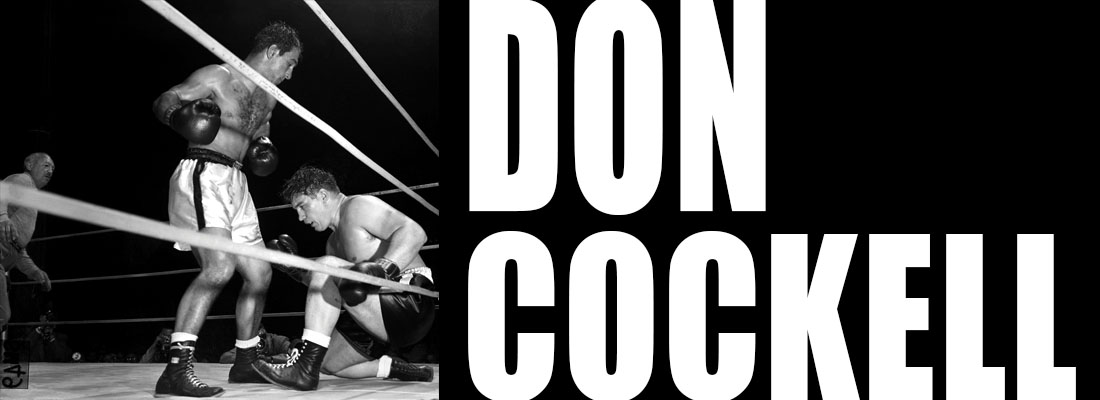 May 16, 1955/Kezar Stadium, San Francisco
May 16, 1955/Kezar Stadium, San Francisco
Following two brutal bouts with Charles, Marciano was entitled to a gimme. Enter British and Commonwealth titleholder Don Cockell. The 205-pounder from London, England, was 16 pounds heavier than the formidable champion, but he was portly, and 18,000 fans at the Kezar Stadium expected a massacre. “Cockell looks like a tub, but he’s got a mean look and he’s real alert – don’t get careless,” said Marciano while reviewing the fight film and recalling his thoughts. “The Rock” didn’t perform at his best but came to himself in the sixth when – with what became a signature move – he feinted the right and uncorked a huge left hook to the jaw. In the eighth, Marciano went after Cockell savagely, and a powerful right draped the Englishman over the middle rope for the first knockdown. The end was near. Another Marciano right floored Cockell early in the ninth, and the challenger was also tagged by a bonus right uppercut as he sat in the corner awaiting the count. All heart and no fuel, Cockell rose only to be floored again by a sustained burst of power shots. When Cockell got up this time, referee Frankie Brown stayed close, and a huge right and equally devastating left prompted his intervention. “I didn’t expect such a strong man in there,” Marciano admitted after the fight. “He was very strong in the first two rounds and a very durable fighter. I thought I hit him with plenty of my best punches.”
Result: TKO 9
***
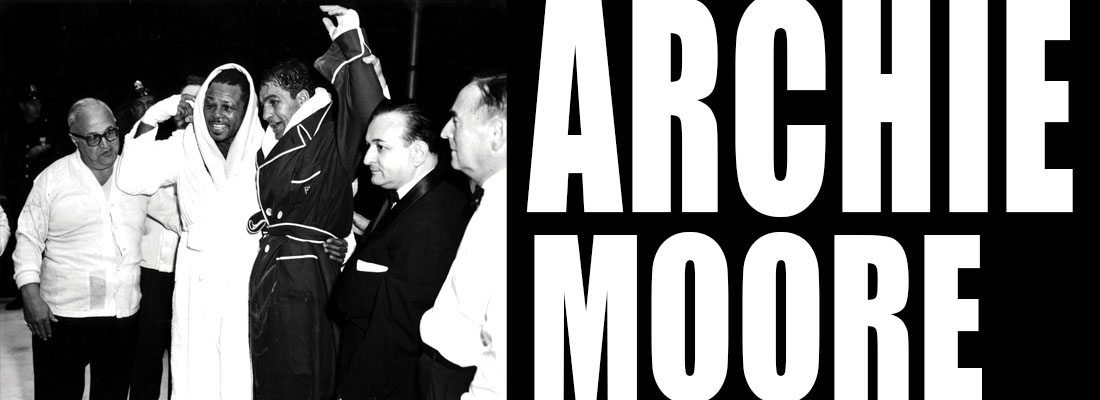 September 21, 1955/Yankee Stadium, New York
September 21, 1955/Yankee Stadium, New York
A crowd of 61,574 turned up for what would be the final chapter. Marciano was a 4-1 favorite to defeat the 39-year-old Moore, who was looking to make history by becoming the first reigning light heavyweight champion to win the heavyweight title. Coming in, “The Old Mongoose” was arguably the most experienced active fighter alive, with an astonishing 149-19-8 (108 KOs) record. In Round 2, Moore, a cerebral ring general, timed Marciano overreaching and floored him with a right hand that was felt but not seen. “The Rock” returned the favor with interest in the sixth, however, flooring the challenger with a bone-crunching right of his own. Moore found his feet, and Marciano put together one of the most violent and prolonged assaults of the era. Defensively brilliant, Moore rode out the majority of these shots, but the ones that landed were doing damage. The light heavyweight king finally elected to fire back and paid the price when Marciano decked him again. Incredibly, Moore fought well in the seventh, but the champ was merely biding his time. He dropped Moore with a big right in the eighth and closed the show with a double left hook in Round 9. This was the last big battle. “I would like to announce my retirement from boxing at this time,” said Marciano at a news conference in April 1956. “I never really got hurt in the ring, and I feel perfect physically, and probably had two or three good fights left.”
Result: KO 9

SUBSCRIBE NOW (CLICK HERE - JUST $1.99 PER MONTH) TO READ THE LATEST ISSUE
